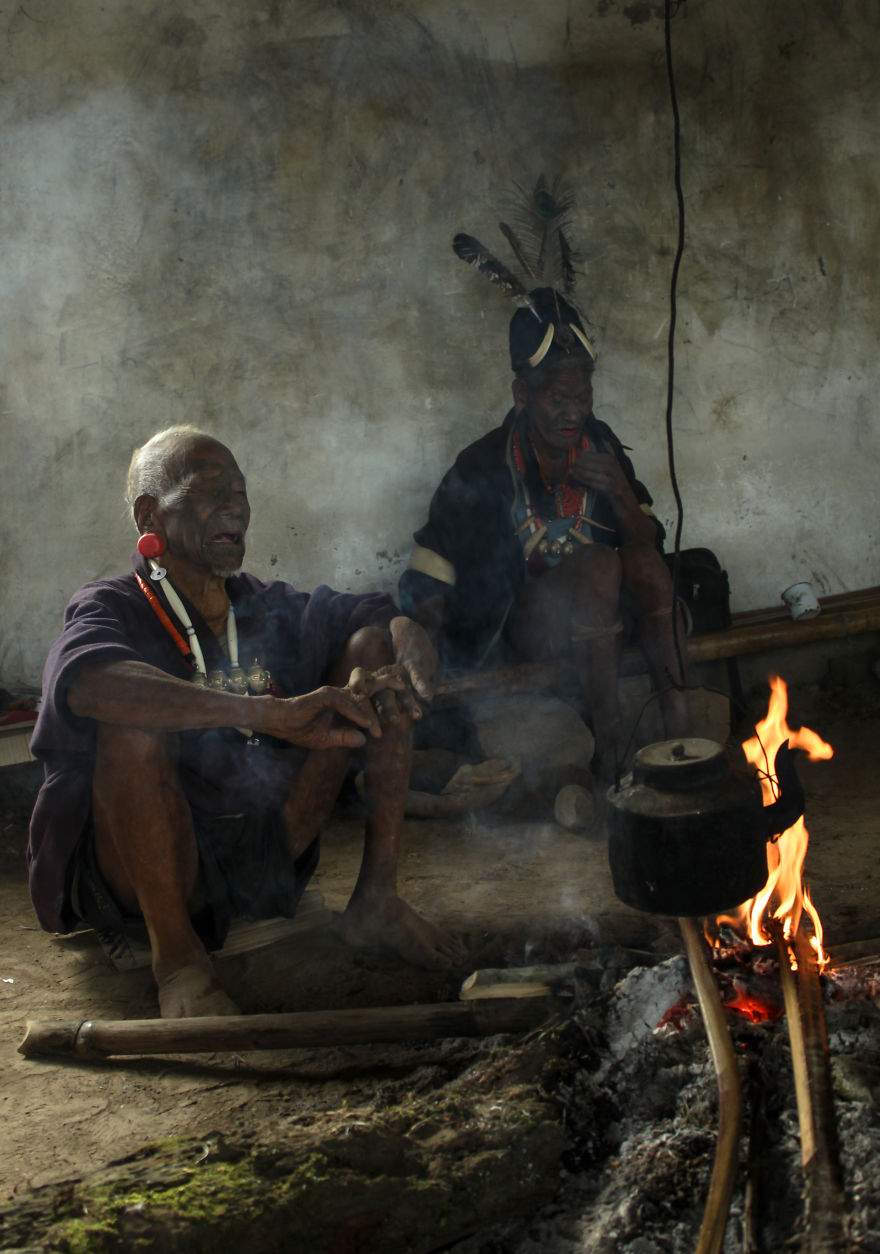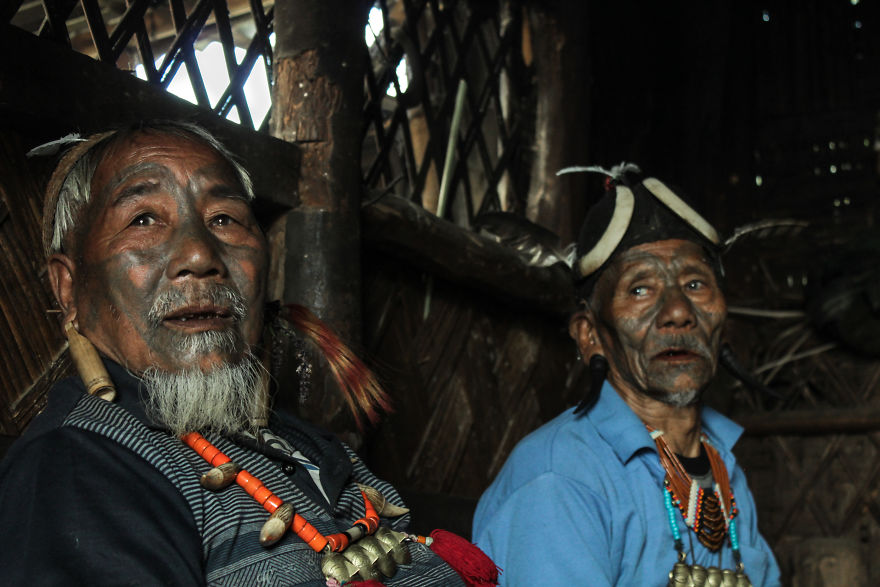
The Last Living Headhunters From Nagaland In Northeast India
Hello! I’m Victor I come from Poland and I’m 29 years old fashion model and travel blogger. I would like to share my photos and report from Nagaland where I met the last head hunters from Konyak tribe in Longwa and Hongphoi villages. I visited one of 16 Konyak tribes to perpetuate stories and culture that is slowly extinguishing from our reality. A conglomeration of cultures and languages; a region forgotten by the world and the Indians themselves; a multicultural mix of people, a gallery of nature, the mystery of history – an unconstrained world in a virgin’s garment, which was never completely discovered.
More info: stadnichenko.com | Instagram | Facebook
Konyak’s hunted human skulls because they believed that only this could guarantee the fertility of their fields and people. The custom of killing the enemy, cutting him and returning with his head showed courage and pride in the past. Their ancestors believed that human skulls contained magical power. It was believed that by taking the enemy’s head as a trophy, you would gain some of its power and soul.
Heroic merit was granted to a warrior who entered the village with the head of an enemy. Residents of the village gave a ceremonial reception to the protagonist. The skull was tied to the sacred ritual tree at the entrance to each village, then the tribe danced and performed night rituals by the fire.
As a trademark honorarium, a young warrior of Konyak would get a tattoo on his chest, which was a high social privilege. Only the best and the bravest warriors had tattooed chests. Only those who brought their heads from hostile villages had the privilege and honor of tattooing the face and wearing a bronze necklace, which represented the number of chopped heads.
There are many types of facial tattoos. The designs vary from villages in the north to the ones in the east. They are closely linked to the dialects spoken by the various sub-tribes of the Konyaks which also change from village to village. Some tribes have chest and back tattoos, some have leg tattoos, others don’t.
The people from Konyak practiced headhunting until 60-70 years. It is also the only tribe that opposed Christianity and modernization longer any other tribe in Nagas because wars and headhunting were an essential part of their life.
At the end of the 19th century, the Missionaries began to set up schools and instill Christianity. The British banned headhunting in 1935. The movement turned out to be fatal to the customary tattooing ritual. It was the arrival of Christianity that had a big impact on the old tradition which was considered pagan. Today almost 98% of the Konyak’s community has converted to Christianity.
All these aspects and rituals were the common practice in everyday life until Christianity put an end to their culture. Today everyone is over 85 years old and no one thinks about headhunting anymore. But as they say, “I miss these times”. Now, they only kill time by drinking black tea and rum and sharing memories at the campfire. A slightly younger generation is still smoking opium while deeply practicing Christianity.
83-year-old Maynam was the first hunter I met and photographed in Longwa village.
The oldest man in Hongphoi village is 105 years old.
100 years old, the second oldest in Hongphoi.
Buowand, at about 88 years old, is the last ‘Angh’ of Hongphoi with a tattooed face. Every Konyak village is ruled by one king, who obviously has the most and biggest skulls. This main king can have from 3 to 6 other sub-kings, depending on the size of a village, in order to maintain his social and war supremacy. Every sub-king is in charge of a different part of the village and reports to the main king. All kings are easily recognizable because of the clear blue beads on their legs. The more blue beads layers they wear, the more powerful and respected they are.
85-year-old Yaowang has chopped 5 heads in the past.
100 years old.
Nyakto from the young generation of people in Longwa ignites a spoon of opium and tells the stories of his village.
In Longwa, kids carry kids.
Friends forever – 83 year-old Manyam on the left side and the oldest in Longwa, 87-year-old Chopa on the right.
‘Hongphoi 2018’ mission completed.
3Kviews
Share on Facebook
 Dark Mode
Dark Mode 

 No fees, cancel anytime
No fees, cancel anytime 










































































32
4